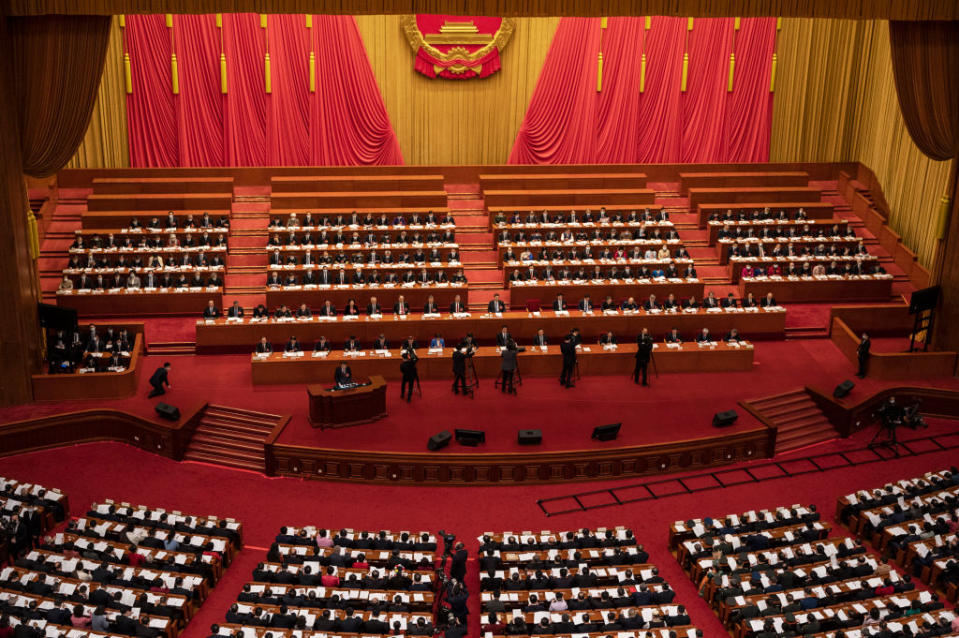Krypto is back from the dead – again

As a long-time, close observer of the crypto-economy, I have always been perplexed by the many gleeful proclamations of Bitcoin’s death in major media and financial news outlets. This has happened 473 times since Bitcoin became a thing in 2010. There is actually a website that tracks these so-called obituary listswhich I wrote about some time ago, during a previous recession.
It’s a longer list now, after a long dark winter.
Not only is Bitcoin not dead, but it and the larger crypto-economy are more robust than they’ve ever been, with several new sectors of crypto-powered innovation singing in full voice—despite increasingly desperate efforts by US lawmakers and regulators, led by by Senator Elizabeth Warren, to stamp it out.
I have previously pointed out, usually to deaf ears, that the price of a particular cryptocurrency is perhaps the least interesting thing about this technology. It simply represents the fear and greed of investors who, by and large, couldn’t care less about how it all works and why it facilitates something never before available to humans – the prospect of a completely unseizable, secure ownership of, well, anything.
Still, I guess by this public market cap metric, crypto has performed astonishingly well over the past couple of months, certainly outperforming stocks, bonds, commodities, real estate, or anything else we could name.
From here [email protected] is the sensational image of where you would have been best placed to invest your money over the past 12 years.
#bitcoin price history pic.twitter.com/yps3hedqpk
– ChartsBtc (@chartsBtc) 21 January 2023
Hong Kong Cosies Up to Crypto
But moving away from number crunching, some critically important things have happened to return crypto to rude health.
The first is that while the U.S. has played dumb with each crypto initiative, there has been a swift and determined move by other jurisdictions to be more accommodating. Surprisingly, like Hong Kong, which has proposed a licensing regime for crypto exchanges and a broader proposal to allow fiat on- and offramps for retail investors. Hong Kong is basically China, which brutally stamped out crypto from its shores last year. It seems they’ve had a rethink. In total, there is $1.3 trillion in the crypto markets right now, and while this doesn’t seem to matter to US regulators, it certainly played a role in China’s volte face.
And of course, there is the warm welcome from Dubai, Switzerland, El Salvador, the Netherlands, Singapore, Estonia, Portugal and a host of other countries shepherding rational and non-adversarial regulation through their legislative corridors, eager to take part in what the US is frantically trying to expel.
And then there is the “Shanghai” upgrade to the world’s second largest blockchain, Ethereum, which last week flawlessly and in real time completed the final step in the transition from the energy-inefficient “proof of work” to the energy-efficient “proof of stake” consensus mechanism itself. This remarkable technical achievement and the next phase of Ethereum’s upgrade (which will address scalability and throughput limitations) have boosted confidence in continued crypto innovation, as evidenced by crypto chatter and trading volume over the past week or so.
But wait, there’s more.
Blockchain magic
A new corner of crypto, unimaginatively called RWA, which I have previously written about, is exploding and poised to completely upend the world of high finance and the physical assets it nurtures. In short, RWA is the application of blockchain magic to the issuance, distribution, and financing of traditional, well-understood real-world assets—private debt, real estate, equity securitization, trade finance, debt instruments, and the like.
The underlying magic that makes this possible is called tokenization, which describes the mathematical cargo carried on the blockchain, now fully embraced and exploited by Goldman Sachs, JPMorgan Chase, the Monetary Authority of Singapore, Deutsche Bank and others as they burst out of the gates of to claim a slice of what is now expected to be a $16 trillion industry by 2030 (according to a BCG study) – 10% of world GDP. And this from a standing start at essentially zero.
An example? From the aforementioned newly crypto-friendly Hong Kong government earlier this year: “The Government of the Hong Kong Special Administrative Region of the People’s Republic of China (HKSAR Government) announced today (February 16) the successful offering of HK$800 million ($100m) of tokenized green bonds (the tokenized green bond) under the Government Green Bond Program (GGBP). This is the first tokenized green bond issued by a government globally.”
We can talk about the maturation of NFTs far beyond graphic images to ticket sales and dynamic social clubs and supply chains and real estate rentals. Or even the much-maligned metaverse, which is now poised to catch fire again as new artificial intelligence projects like ChatGPT inject their ability to conjure novelty into otherwise static graphical online environments.
Oh, and Zero-Knowledge Proof, which I’ve written about before, which is just beginning its crypto journey, a piece of face-smashing cryptographic and mathematical magic that allows statements to be certified true without having to present any proof of being so.
About these skeptics
But still there will be many whose skepticism will remain untouched, and who will ignore all these green shoots that are now turning into true flora. Maybe it’s because they’re reading the headlines written by those who are ill-informed or just plain pissed off about the whole crypto thing (a position I somewhat empathize with).
To these people, the readers and commenters, crypto will always die, almost dead, any day now. Until they wake up one morning and it’s everywhere, embedded in the fabric of, well, everything. DM
Steven Boykey Sidley is Professor of Practice at JBS, University of Johannesburg
![]()
























